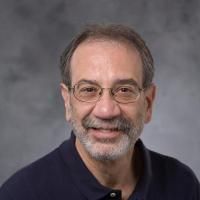CTIM-10. REPRODUCIBILITY OF CLINICAL TRIALS USING CMV-TARGETED DENDRITIC CELL VACCINES IN PATIENTS WITH GLIOBLASTOMA
Date
2021-11-12
Journal Title
Journal ISSN
Volume Title
Repository Usage Stats
views
downloads
Citation Stats
Attention Stats
Abstract
<jats:title>Abstract</jats:title> <jats:sec> <jats:title>INTRODUCTION</jats:title> <jats:p>Vaccination with dendritic cells (DCs) fares poorly in primary and recurrent glioblastoma (GBM). Moreover, GBM vaccine trials are often underpowered due to limited sample size.</jats:p> </jats:sec> <jats:sec> <jats:title>METHODS</jats:title> <jats:p>To address these limitations, we conducted three sequential clinical trials utilizing Cytomegalovirus (CMV)-specific DC vaccines in patients with primary GBM. Autologous DCs were generated and electroporated with mRNA encoding for the CMV protein pp65. Serial vaccination was given throughout adjuvant temozolomide cycles, and 111Indium radiolabeling was implemented to assess migration efficiency of DC vaccines. Patients were followed for median overall survival (mOS) and OS.</jats:p> </jats:sec> <jats:sec> <jats:title>RESULTS</jats:title> <jats:p>Our initial study was the phase II ATTAC study (NCT00639639; total n=12) with 6 patients randomized to vaccine site preconditioning with tetanus-diphtheria (Td) toxoid. This led to an expanded cohort trial (ATTAC-GM; NCT00639639) of 11 patients receiving CMV DC vaccines containing granulocyte-macrophage colony-stimulating factor (GM-CSF). Follow-up data from ATTAC and ATTAC-GM revealed 5-year OS rates of 33.3% (mOS 38.3 months; CI95 17.5-undefined) and 36.4% (mOS 37.7 months; CI95 18.2-109.1), respectively. ATTAC additionally revealed a significant increase in DC migration to draining lymph nodes following Td preconditioning (P=0.049). Increased DC migration was associated with OS (Cox proportional hazards model, HR=0.820, P=0.023). Td-mediated increased migration has been recapitulated in our larger confirmatory trial ELEVATE (NCT02366728) of 43 patients randomized to preconditioning (Wilcoxon rank sum, Td n=24, unpulsed DC n=19; 24h, P=0.031 and 48h, P=0.0195). In ELEVATE, median follow-up of 42.2 months revealed significantly longer OS in patients randomized to Td (P=0.026). The 3-year OS for Td-treated patients in ELEVATE was 34% (CI95 19-63%) compared to 6% given unpulsed DCs (CI95 1-42%).</jats:p> </jats:sec> <jats:sec> <jats:title>CONCLUSION</jats:title> <jats:p>We report reproducibility of our findings across three sequential clinical trials using CMV pp65 DCs. Despite their small numbers, these successive trials demonstrate consistent survival outcomes, thus supporting the efficacy of CMV DC vaccine therapy in GBM.</jats:p> </jats:sec>
Type
Department
Description
Provenance
Subjects
Citation
Permalink
Published Version (Please cite this version)
Publication Info
Batich, Kristen, Duane Mitchell, Patrick Healy, James Herndon, Gloria Broadwater, Gunn Michael, Min-Nung Huang, Kelly Hotchkiss, et al. (2021). CTIM-10. REPRODUCIBILITY OF CLINICAL TRIALS USING CMV-TARGETED DENDRITIC CELL VACCINES IN PATIENTS WITH GLIOBLASTOMA. Neuro-Oncology, 23(Supplement_6). pp. vi51–vi51. 10.1093/neuonc/noab196.202 Retrieved from https://hdl.handle.net/10161/24053.
This is constructed from limited available data and may be imprecise. To cite this article, please review & use the official citation provided by the journal.
Collections
Scholars@Duke

Margaret Johnson
I am a neuro-oncologist, neurologist, and palliative care physician at the Preston Robert Tisch Brain Tumor Center. I also provide neuro-oncology expertise for the National Tele-Oncology Program and National Precision Oncology Program at the Veteran's Health Administration. My clinical and research interests encompass supportive care and palliative care with a special interest in older adults with brain tumors. The incidence of malignant brain tumors like glioblastoma and non-malignant tumors like meningioma affect aging populations and it is crucial to be able to provide better care for these patients.

Daniel Bryce Landi

Henry Seth Friedman
Overview: Our laboratory is pursuing a comprehensive analysis of the biology and therapy of adult and childhood central nervous system malignancies, particularly high-grade medulloblastoma, glioma, and ependymoma.
Laboratory Studies: Active programs, using human adult and pediatric CNS tumor continuous cell lines, transplantable xenografts growing subcutaneously and intracranially in athymic nude mice and rats, and as well as in the subarachnoid space of the athymic nude rats, and patients tumor specimens, are defining:
1) the chemotherapeutic profile of medulloblastoma, adult and childhood glioma and ependymoma
2) mechanisms of resistance to classical bifunctional alkylators, nitrosoureas and methylators operational in malignant glioma and medulloblastoma, particularly DNA adduct and crosslink repair, O6-alkylguanine-DNA alkyltransferase elevation and DNA mismatch repair deficiency.
3) modulations designed to over come or circumvent specific mechanisms of resistance
4) the activity of signal pathway inhibitors of EGFR, m-tor and other targets
5) the therapeutic advantages of intrathecal and intratumoral drug delivery in the treatment of neoplastic meningitis and intracranial malignancies, respectively.
The results of the therapeutic studies to date have demonstrated the marked activity of alkylating agents, particularly melphalan and cyclophosphamide and the role of glutathione, AGT glutathione-S-transferase, abnormal drug transport and alterations in formation and repair of DNA-DNA crosslinks in modulating cytotoxicity of these agents. Modulations shown to be effective in enhancing alkylator activity/reversing alkylator resistance include BSO-mediated glutathione depletion, inhibition of DNA-DNA crosslink repair and inhibition of 06-alkylguanine-DNA alkyltransferase by 06-benzylguanine. Recent studies have demonstrated profound activity of temozolomide, CPT-11 topotecan, irofulven, and karenitecin as well as the combination of CPT-11 or topotecan plus BCNU or temozolomide. Successful treatment of neoplastic meningitis in nude rats with intrathecal 4-hydroperoxycyclophosphamide, melphalan, temozolomide and busulfan, and intracranial glioma in nude rats with intratumoral temozolomide has also been demonstrated. More recent studies have revealed cyclophosphamide resistance secondary to DNA interstrand crosslink repair. Additional studies have shown that cyclophosphamide crosslinks are formed at the 1,3 N7 position, serving as the basis for construction of a defined crosslink in a plasmid vector to assay for crosslink repair and allowing demonstration of the lack of a role of nucleotide excision repair. Mismatch repair deficiency has been shown as a mechanism mediating acquired methylator (procarbazine and temozolomide) resistance in an adult glioblastoma xenograft.
Clinical Studies: Clinical investigations are designed to translate laboratory programs into successful treatment for adults and children with malignant brain tumors, particularly medulloblastoma. Clinical trials for adults include phase II trials of temozolomide, ZD1839 (Iressa), karenitecin, and temozolomide plus O6-BG as well as phase I trials of topotecan plus BCNU, CPT-11 plus temozolomide, and PTK787 ± temozolomide or CCNU. Studies are in progress in children evaluating the activity CPT-11 plus temozolomide, intrathecal busulfan and cyclophosphamide/melphalan or cyclophosphamide/busulfan plus autologous bone marrow support . Extension of these studies to a larger cohort of patients is being performed nationally under the auspices of the Pediatric Brain Tumor Consortium (Henry S. Friedman -- Head of New Agents Committee).
Future studies will address the role of agents designed to decrease repair of interstrand crosslinks when given in combination with alkylating agents, as well as newer signal pathway inhibitors such as RAD001, PKI166, and DB-67.

Darell Doty Bigner
The Causes, Mechanisms of Transformation and Altered Growth Control and New Therapy for Primary and Metastatic Tumors of the Central Nervous System (CNS).
There are over 16,000 deaths in the United States each year from primary brain tumors such as malignant gliomas and medulloblastomas, and metastatic tumors to the CNS and its covering from systemic tumors such as carcinoma of the lung, breast, colon, and melanoma. An estimated 80,000 cases of primary brain tumors were expected to be diagnosed last year. Of that number, approximately 4,600 diagnosed will be children less than 19 years of age. During the last 20 years, however, there has been a significant increase in survival rates for those with primary malignant brain tumors.
For the last 44 years my research has involved the investigation of the causes, mechanism of transformation and altered growth control, and development of new methods of therapy for primary brain tumors and those metastasizing to the CNS and its coverings. In collaboration with my colleagues in the Preston Robert Tisch Brain Tumor Center, new drugs and those not previously thought to be active against CNS tumors have been identified. Overcoming mechanisms of drug resistance in primary brain tumors are also being pursued.
As the founding Director of the Preston Robert Tisch Brain Tumor Center, I help coordinate the research activities of all 37 faculty members in the Brain Tumor Center. These faculty members have projects ranging from very basic research into molecular etiology, molecular epidemiology, signal transduction; translational research performing pre-clinical evaluation of new therapies, and many clinical investigative efforts. I can describe any of the Brain Tumor Center faculty member’s research to third year students and then direct them to specific faculty members with whom the students would like a discussion.
We have identified through genome-wide screening methodology several new target molecules selectively expressed on malignant brain tumors, but not on normal brain. These include EGFRwt, EGFRvIII, and two lacto series gangliosides, 3'-isoLM1 and 3',6'-isoLD1 and chondroitin proteoglycan sulfate. We raised conventional and fully human monoclonal antibodies against most of these targets as well as having developed single fragment chain molecules from naïve human libraries.
My personal research focuses on molecularly targeted therapies of primary and metastatic CNS tumors with monoclonal antibodies and their fragments. Our study we conducted was with a molecule we discovered many years ago, the extracellular matrix molecule, Tenascin. We have treated over 150 malignant brain tumor patients with excellent results with a radiolabeled antibody we developed against Tenascin. We are collaborating with Dr. Ira Pastan at NIH to develop tumor-targeted therapies by fusing single fragment chain molecules from monoclonal antibodies or from naïve human libraries to the truncated fragment of pseudomonas exotoxin A. One example of this is the pseudomonas exotoxin conjugated to a single fragment chain antibody that reacts with wild type EGFR and EGFRvIII, two overexpressed proteins on glioblastoma. The immunotoxin, called D2C7-IT, is currently being investigated in an FDA dose-escalation study, in which patients undergoing treatment of this investigational new drug are showing positive responses. My laboratory is also working with Matthias Gromeier, creator of the oncolytic poliovirus - a re-engineered poliovirus that is lethal to cancer cells, but not lethal to normal cells. The oncolytic poliovirus therapeutic approach has shown such promising results in patients with glioblastoma, that it was recently featured on a on a special two-segment program of 60 Minutes. The next clinical step will be to combine both the virus and the immunotoxin with anti-PD1, an immune checkpoint blockade inhibitor and with anti-CD40, a fully human monoclonal antibody which converts tumor stimulant macrophages into tumor suppressive macrophages. We believe that regional tumor-targeted cytotoxic therapies, such as oncolytic poliovirus and the D2C7 immunotoxin, not only specifically target and destroy tumor cells, but in the process, initiate immune events that promote an in situ vaccine effect. That immune response can be amplified by human checkpoint blockade to engender a long-term systemic immune response that effectively eliminates recurrent and disseminated GBM cells. Ultimately, all three agents may be used together, providing different antigenic targets and cytotoxicity mechanisms.
We have identified through genome-wide screening methodology several new target molecules selectively expressed on malignant brain tumors, but not on normal brain. These include glycoprotein non-metastatic B (GPNMB), a molecule shared with malignant melanoma; MRP3, a member of the multidrug resistant family; and two lacto series gangliosides, 3'-isoLM1 and 3',6'-isoLD1 and chondroitin proteoglycan sulfate. We are raising conventional monoclonal antibodies against all of these targets as well as developing single fragment chain molecules from naïve human libraries. When necessary, affinity maturation in vitro is carried out and the antibodies and fragments are armed either with radioactive iodine, radioactive lutetium, or radioactive Astatine-211. Other constructs are evaluated for unarmed activity and some are armed with Pseudomonas exotoxin. After development of the constructs, they are evaluated in human malignant glioma xenograft systems and then all studies necessary for Investigational New Drug Permits from the Food and Drug Administration are carried out prior to actual clinical trial.
I was senior author on a New England Journal of Medicine paper that was the first to show markedly increased survival in low to intermediate grade gliomas with an isocitrate dehydrogenase mutation.
The first fully funded Specialized Research Center on Primary and Metastatic Tumors to the CNS funded by the National Institutes of Health, of which I was Principal Investigator, was funded for 30 years at which time the type of grant was discontinued. My NCI MERIT Award, which ranked in the upper 1.2 percentile of all NIH grants at the time of its last review, is currently in its 40th year of continuous funding. It is one of the few MERIT awards awarded three consecutive times, and it is the longest continually funded grant of the NCI Division of Cancer Diagnosis and Treatment. My last NCI Award was an Outstanding Investigator Award from 2014 to 2022.
In addition to the representative publications listed, I have made national presentations and international presentations during the past year.
My laboratory has trained over 50 third year medical students, residents, Ph.D. students, and postdoctoral fellows and I have a great deal of experience in career development with some students having advanced all the way from fellowship status to endowed professorships. A major goal with third year medical students is to perform work that can be presented in abstract form at national or international meetings and to obtain publication in major peer-reviewed journals.

Roger Edwin McLendon
Brain tumors are diagnosed in more than 20,000 Americans annually. The most malignant neoplasm, glioblastoma, is also the most common. Similarly, brain tumors constitute the most common solid neoplasm in children and include astrocytomas of the cerebellum, brain stem and cerebrum as well as medulloblastomas of the cerebellum. My colleagues and I have endeavored to translate the bench discoveries of genetic mutations and aberrant protein expressions found in brain tumors to better understand the processes involved in the etiology, pathogenesis, and treatment of brain tumors. Using the resources of the Preston Robert Brain Tumor Biorepository at Duke, our team, consisting of Henry Friedman, Allan Friedman, and Hai Yan and lead by Darell Bigner, have helped to identify mutations in Isocitrate Dehydrogenase (IDH1 and IDH2) as a marker of good prognosis in gliomas of adults. This test is now offered at Duke as a clinical test. Working with the Molecular Pathology Laboratory at Duke, we have also brought testing for TERT promoter region mutations as another major test for classifying gliomas in adults. Our collaboration with the Toronto Sick Kids Hospital has resulted in prognostic testing for childhood medulloblastomas, primitive neuroectodermal tumors, and ependymomas at Duke.

John P. Kirkpatrick
Malignant and benign tumors of the brain, spine and base of skull. Mathematical modelling of tumor metabolism, mass transfer and the response to ionizing radiation. Enhancing clinical outcome in stereotactic radiosurgery, fractionated stereotactic radiotherapy and stereotactic body radiotherapy.

David Michael Ashley
My career in cancer research dates more than two decades. I am credentialed in both pediatric and adult neuro-oncology practice and this has been the focus of my efforts in translational research and leadership. As evident from my publication and grant support record, my primary academic focus has been on neurologic tumors, the development of innovative therapies and approaches to care. These efforts have included basic and translational laboratory research. My experience includes moving laboratory findings in brain tumor immunology and epigenetics into early phase clinical trials. I have expertise in immuno-oncology, having developed and clinically tested dendritic cell vaccines and other immuno-therapeutics. My achievements in research have led to change in practice in the care of children and adults with brain tumors, including the introduction of new standards of practice for the delivery of systemic therapy. I am highly regarded for this work, as evidenced by numerous invitations to plenary sessions and symposia of international standing. I have been the principal investigator of a number of important national and international studies, both clinical and pre-clinical. I am recognized as a senior figure and opinion leader in neuro-oncology nationally and internationally. I have held several significant leadership roles, including Director of two major cancer centers, I served as the Chair of Medicine at Deakin University, the Program Director of Cancer Services at University Hospital Barwon Health, and Executive Director of the Western Alliance Academic Health Science Centre (Australia). I began my current position as Director of The Preston Robert Tisch Brain Tumor Center, Head, Preuss Laboratory, in March 2018. In this role, I am responsible for the clinical care, research, and educational program related to Brain Tumor Center. I am also a senior investigational neuro-oncologist within the adult brain tumor program at Duke.

John Howard Sampson
Current research activities involve the immunotherapeutic targeting of a tumor-specific mutation in the epidermal growth factor receptor. Approaches used to target this tumor-specific epitope include unarmed and radiolabeled antibody therapy and cell mediated approaches using peptide vaccines and dendritic cells. Another area of interest involves drug delivery to brain tumors. Translational and clinical work is carried out in this area to formulate the relationship between various direct intratumoral infusion parameters and drug distribution within brain tumors and normal brain.
The Duke Brain Tumor Immunotherapy Program (BTIP) has an emphasis on translational research in Neuro-Oncology. There are two main areas of study. The first is novel mechanisms of delivery of large molecular weight molecules, such as monoclonal antibodies, throughout brain intersitial space using novel intracerebral infusion techniques developed by this laboratory. Studies exploring this technology are undertaken in both small and large laboratory animals and patients with brain tumors.
The other focus of the BTIP is translational immunotherapy. In this line of work, dendritic cell vaccination strategies and adoptive T-cell strategies have been developed to target novel and well-characterized tumor-specific antigens in patients with brain tumors. The BTIP integrates well with and works closely with the Preston Robert Tisch Brain Tumor Center at Duke. The BTIP is well funded and currently holds seven NIH grants, including a SPORE in Brain Cancer grant. There are a large number of investigators at various levels so that students will get exposure to various levels of research and mentorship.
Unless otherwise indicated, scholarly articles published by Duke faculty members are made available here with a CC-BY-NC (Creative Commons Attribution Non-Commercial) license, as enabled by the Duke Open Access Policy. If you wish to use the materials in ways not already permitted under CC-BY-NC, please consult the copyright owner. Other materials are made available here through the author’s grant of a non-exclusive license to make their work openly accessible.
